A year for strengthening
The year of 2020 was one of challenges that had never been imagined, both to the environment and to society.
But to all of us at IPÊ it was a year that strengthened the conviction of the importance of our work for biodiversity and, thus, to contribute to mitigation of the climate crisis. It was a period in which we adapted, were recognized for our efforts, and pushed on ahead, acting together, each one of us according to his or her talent, ability and passion. In this report, we show the main results of this unforgettable year.
Enjoy your visit to our Annual Report!
Where we are
See where our initiatives are
Our impact
12,000
people benefited
from IPÊ’s initiatives per year
(last 5 years)
3.7 million
trees planted
in the Atlantic Forest, conserving
local fauna and water resources
6
species of the fauna directly
investigated, generating benefits
for other species
Over 7,000
people trained
at IPÊ’s school
ESCAS
Apart from housing the IPÊ headquarters and the ESCAS campus, Nazaré Paulista is the focus of actions for the Cantareira System, to promote water security for over 12 million people.
In the cities of Nova Iguaçu and Duque de Caxias, in the Baixada FLuminense, we worked on implementing 100 hectares of agroforestry systems in 33 settlements, small properties and rural communities.
In Guaranésia (Minas Gerais), we implemented a model silvopastoral farm to promote and clarify sustainable dairy farming aligned with the plantation of native trees.
In Brasília, we have a regional office.
In Pontal do Paranapanema, we developed management of landscapes, balancing economic gains with maintenance of ecosystem services and conservation of threatened species.
In the Pantanal and Cerrado, we have developed initiatives for conservation of three endangered species, involving research, environmental education, tourism and training:
We also promoted sustainable livestock farming in the region.
In the South of Bahia, in Porto Seguro, ESCAS offers a Professional Master’s in Conservation of Biodiversity and Sustainable Development.
There are already 67 masters graduated from ESCAS Bahia campus. Most of them under full scholarships.
In the AMAZON, we operated in solutions that integrate society, management of protected areas and conservation.
Landscape Restoration
Pontal do Paranapanema, in the west of São Paulo state, was where it all started. There, we started actions to protect the black lion tamarin, endemic to the region, and, from there, almost 30 years ago, we created the IPÊ. Today, we work with the Dream Map, which will concentrate 40,000 hectares of green fragments, and we take knowledge on agroforestry systems to local producers. Thus, one of the Atlantic Forest regions most affected by deforestation can already see encouraging results for nature, with forestry corridors, and also for the population, with generation of income.
In Pontal do
Paranapanema
IPÊ operates on conservation of the black lion tamarin and all fauna and flora, as well as taking sustainable economics practices to producers and contributing to mitigation of climate change. Our achievements:
The main Atlantic Forest corridor reforested in Brazil: 2.4 million trees and 12 kilometers.
We have already planted and influenced the planting of 3,220 hectares, among them active plantations, enrichment and passive restoration. That means: 4 million trees.
The classification of the black lion tamarin has improved in the Red List, going from “critically endangered” to “endangered”.
Support in establishment of the Black Lion Tamarin Ecological Station and other Protected Areas.
Inclusion of environmental education in the school curriculum in Teodoro Sampaio.
Over 500 people benefited with sustainable alternatives for production and income, 354 in 2020 alone.
Green corridors
The 445,500 trees that we planted in 2020 help form corridors to connect Black Lion Tamarin Ecological Station and Morro do Diabo State Park. To do so, 43 kilometers of corridors are required. We have already implemented 17 km, and our partners, another 12 km. This and other reforestation and restoration actions are part of our Dream Map, whose objective is to restore 40,000 hectares to form forestry corridors.
Learn more.
Women in leadership
In 2020, nine nurseries that we follow closely produced 800,000 saplings and donated 10,000 to our projects. Female power is at the front of this production: of the 26 professionals at the nurseries, 15 are women. A year and a half ago, Maria Regina dos Santos set up nursery Mata Nativa and now produces around 100,000 saplings a year. “My husband shares the sapling sale work with me. However, I am responsible for collecting, planting, and treating the saplings, with the help of my employee. I occasionally hire daily workers.”
Learn more.
Agroforestry systems
Agroforestry systems (SAFs) integrate forest conservation with livestock farming, generating clear environmental, social and economic benefits. Over 51 families in rural settlements received technical assistance from IPÊ to implement SAFs. Apart from income, this agricultural modality helps preserve the Atlantic Forest. In 2020, farmers produced 1,422 kg of agro-forestry dried-out coffee, and sold 1,093 packets.
Black lion tamarin
In 2020, alongside universities, zoological institutions, the government, NGOs and the IUCN, we developed he Populational Viability Analysis of the black lion tamarin (Leontopithecus chrysopygus). We also reached a total of 20 artificial dens installed in the reforestation corridors and fragments, and they provide protection for these animals, while also helping us monitor the species. We want to guarantee at least two self-sustainable populations, through the restoration of the habitat and connection of the areas. This helps improve the quality of the forest and of ecosystem services, which are fundamental to the animals and to the people in the region, as they help regulate the climate and purify the air and water.
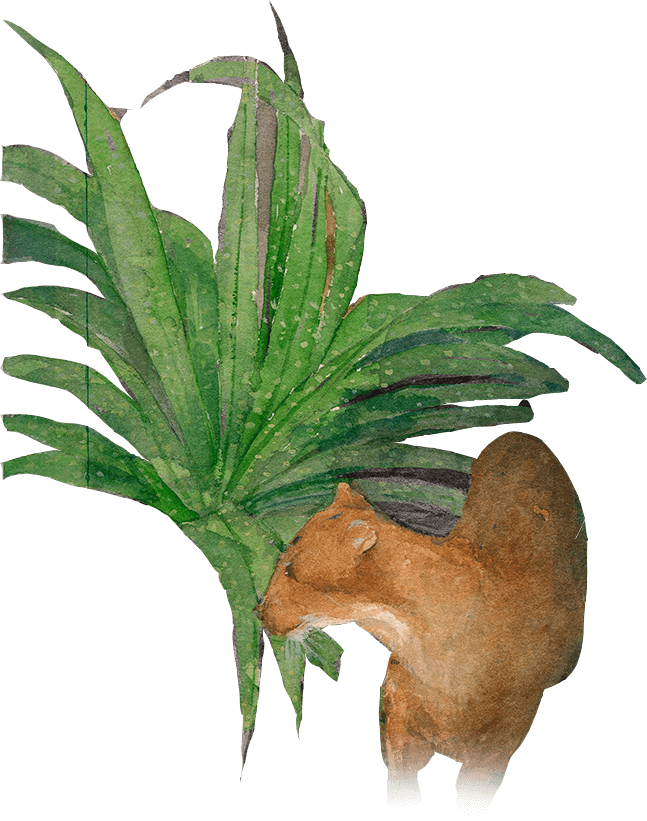
Nazaré Paulista and Cantareira System
Nazaré Paulista
and Cantareira System
To promote the resilience of the Cantareira System and the water safety of all those who depend on it, we have been working to stunt environmental degradation and recover watershed areas. What we have done:
Plantation of 370,000 trees native to the Atlantic Forest in watershed areas
7,300 people (students, educators, producers) benefitted by training and environmental campaigns
We have taken environmental education to 100% of schools
in Nazaré Paulista
From Nazaré Paulista (São Paulo state), where the IPÊ is headquartered, we operate in benefit of the Cantareira System, which supplies water to 7.6 million people in the metropolitan region of the city of São Paulo alone. We contributed to stunt environmental degradation, recover watershed areas, conserve the fauna and flora, and promote water safety for all who depend on it. This includes farmers and the population of eight cities that are included in the system: Nazaré Paulista, Piracaia, Joanópolis, Bragança Paulista, Mairiporã (in São Paulo state), and Camanducaia, Extrema and Itapeva (in Minas Gerais state).
We promoted the largest mapping of the socio-environmental situation in the system and know that there is a deficit of 35 million trees in the Permanent Protection Areas (PPAs) in Cantareira. That is why we have such intense action in forest restoration and sharing of sustainable agriculture and livestock produce with farmers. Furthermore, we reached hundreds of students with free environmental education.
These initiatives are conducted by the Sowing Water Project, with the support of the Petrobras Socio-environmental Program and Caterpillar Foundation. Today, due to the project, 15 properties in the region have more sustainable models for use of soil. “We understand that conserving this natural resource is our mission,” says Luca Mantovanelli, a farmer from Nazaré Paulista.
In Cantareira, we operate for reduction of the impacts of climate change in the territory. We are studying actions to increase the resilience of ecosystem services and are working alongside farmers in adaptation to the impacts that are already being felt. With the support of Fapesp and the Forestry Foundation, we have also started an evaluation of the impact of climate change in the Atlantic Forest in seven Protected Areas in the Cantareira Continuum.
We always incentivize the articulation between the civil society, private initiative, states and cities for the socio-economic development of the region. In the year, we have contributed and taken proposals to the city of Nazaré Paulista, to the Technical Chambers of the PCJ Committee and to the São Paulo state Environmental Parliamentary Front. We have also created a communications network for researchers and managers of Protected Areas who work in the Cantareira Continuum, in partnership with the Forestry Foundation, stimulating the exchange of experience.
Sowing Water actions in 2020:
Activities like environmental education were paralyzed due to the pandemic, but we advanced in several sectors, like public policies and technical assistance to landowners.
65 people
benefitted through environmental education
15 owners
and their families benefitted by rural extensionism
+ 5 new
demonstrative units implemented (small properties that adopted more sustainable productive systems)
Conservation of Species
Pantanal and Cerrado
Conservation
of Species
IPÊ, from the Pantanal and the Cerrado (the Brazilian savannah), contributes to the global effort for conservation of species and ecosystems, through research, promotion of knowledge, articulation with the society, and influence in the creation of public policies for three emblematic species. View our activities:
Lowland tapir:
in 25 years, we established the world's most complete data bank on the species
Giant armadillo:
collection of new information that helps plan conservation
Giant anteater:
monitoring and campaigns to stop roadkill
Lowland tapir
Lowland tapir
The IPÊ’s LTCI – Lowland Tapir Conservation Initiative, has been in operation for 25 years and is now the world's main research and conservation program for this mammal. In Pantanal, Cerrado and Atlantic Forest, we worked on:
500+
genetic samples in our “biobank”
650,000+
photographs and videos of tapirs obtained by camera traps
172
different tapirs captured and sampled (35 in the Atlantic Forest, 102 in the Pantanal, and 35 in the Cerrado)
104 tapirs
monitored by telemetry
Preservation of the lowland tapir (Tapirus terrestris) is essential for maintenance of biodiversity: not by chance, it is called the forest’s gardener, as it fulfills an important function as a dispenser of seeds. The tapir is also an ambassador for promoting conservation of all biomes in which it finds itself.
The main threats are loss of habitat, roadkill, and contamination by pesticides, especially in the Cerrado. In the Pantanal, in turn, the tapir population and the environment in which they live are healthier and, therefore, the data collected there is important for the establishment of strategies and public policies for conservation around the world.
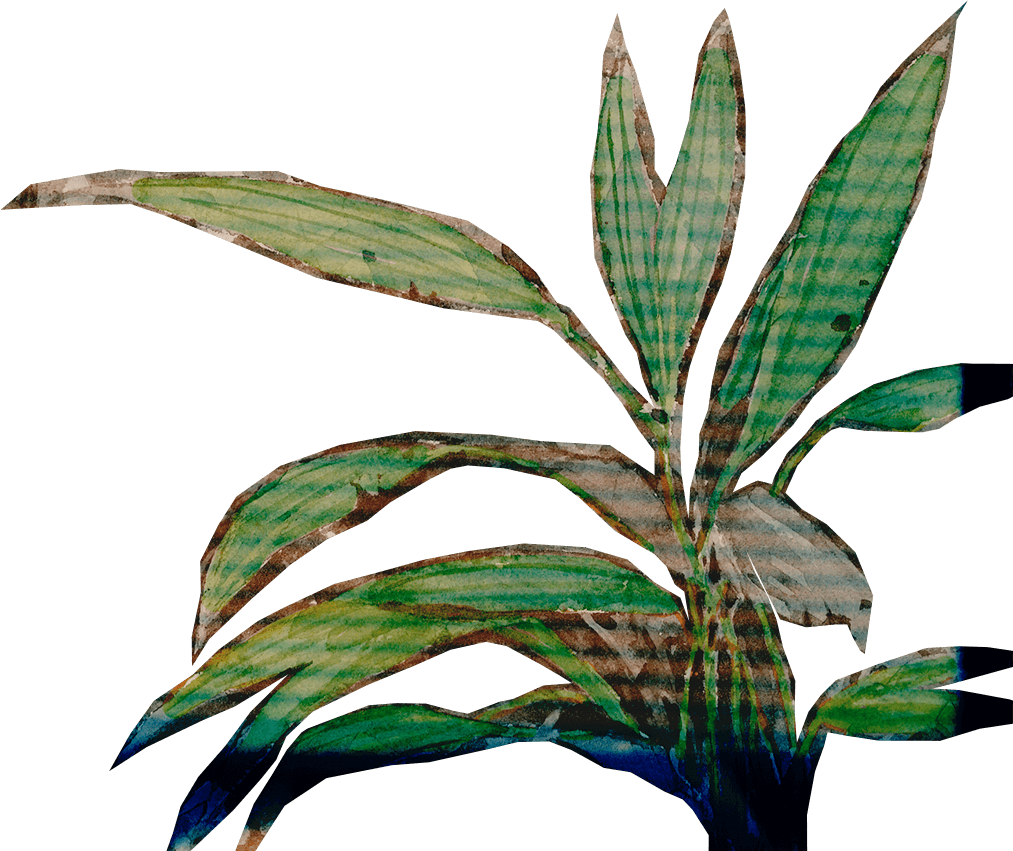
Giant Armadillo
Giant Armadillo
The giant armadillo (Priodontes maximus) is the largest among the 20 known species of armadillos. To conserve this species, IPÊ is studying and developing actions in partnership with the Institute for Wildlife Conservation (ICAS), in Pantanal, in the Atlantic Forest and Cerrado. Learn about our accomplishments over ten years:
The species is currently one of the most used mammals to guide THE ESTABILSHMENT OF PROTECTED AREAS and corridors for conservation in Mato Grosso do Sul
2,500 STUDENTS from 50 public schools were benefitted with environmental education
Our information is used in PUBLIC POLICIES, like the National Action Plan for the Giant Armadillo, whose objective is to minimize the threats to species in the country
OVER 80 BIOLOGISTS AND VETS were trained for the project
In 2020, we celebrated the first decade of the project for conservation of the giant armadillo (Priodontes maximus). This animal, which may grow as large as 1.5 meter in length and weigh over 50 kilograms, is the largest of the 20 known species of armadillos, and classified as vulnerable in the red list of endangered species of the International Union for Conservation of Nature.
We documented the important part of these animals as engineers of the ecosystem and we generated consistent data about the animal's spatial ecology and selection of habitats. Studies on health, genetics, diet and reproduction complete this research which is a reference in Brazil. The work has already generated national and international awards.
Giant Anteater
Giant Anteater
Project Bandeiras e Rodovias (Armadillos and Highways), the main IPÊ initiative for the giant anteater (Myrmecophaga tridactyla), in the Cerrado, is aimed at reducing roadkill of this species. The project is developed in partnership with ICAS - the Wildlife Conservation Institute. View our main activities:
Since 2017, 44 GIANT ANTEATERS WERE MONITORS to understand their movement, especially close to highways
223 COLLABORATORS were trained to operate on highway BR-163, in monitoring activities
Roadkill and accidents with giant anteaters (Myrmecophaga tridactyla) and other species on the highways of Mato Grosso do Sul reached alarming levels. Therefore, IPÊ and ICAS - the Institute for Wildlife Conservation runs project Bandeiras e Rodovias (Anteaters and Highways) in the region. The initiative monitors highways every 15 days to know where most collisions occur.
On evaluation of these occurrences, the project manages to identify solutions to the problem and take it to decision makers and formulators of public policies, as well as alerting and informing the local population and highway users. Roads should become safer not just to animals, but also to people.
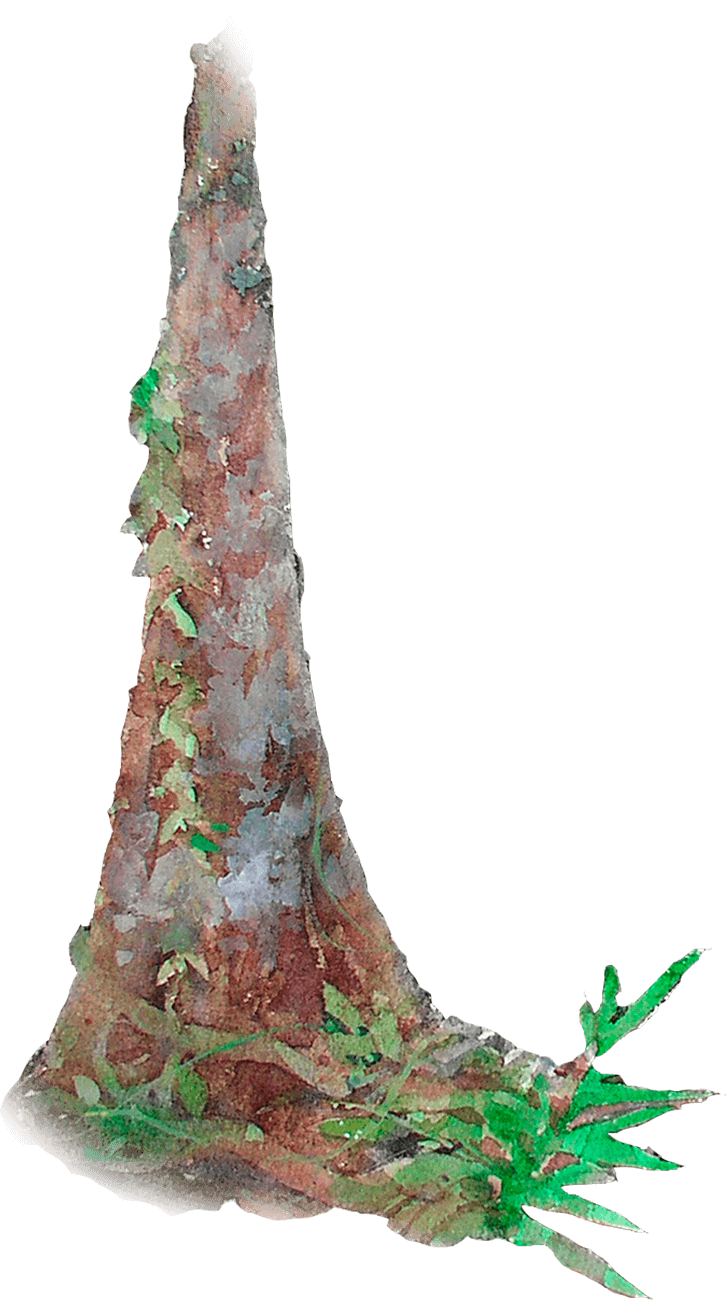
Research and Development
We carried out a research project at Pontal do Paranapanema (SP), on economic and monetary valuation of ecosystem services. The studies are carried out in the forest restoration area of the company CTG Brasil and assess how much this action reduces, in terms of environmental damage, mitigation costs and how it brings new business opportunities. As part of this study, we use camera traps and standalone recorders to capture images and sounds of the local biodiversity, as well as technologies to assess carbon stocks in forests. The initiatives are in partnership with FEALQ - Luiz de Queiroz Agrarian Studies Foundation, ESALQ, Federal University of Lavras and GVCes, Getúlio Vargas Foundation. For the same project, in 2020, we carried out a study of the multifunctionalities of different types of forest (such as agroforestry systems and those undergoing natural regeneration). With other partners, such as Newfor, we are also mapping 4,500 hectares of forests to study these typologies. As next steps, the project will assess how forest restoration actions contribute to the social relations of local communities (social ecosystem services), as this is a way to adapt the planning of business interventions to the socioeconomic and cultural context of the territory that receive them, strengthening relationships and reducing reputational risks.
Sustainable Livestock
In Brazil, cattle occupies 75% of agricultural land. Climate change and the growing demand for high-quality products with social and environmental responsibility indicate that we urgently need to build sustainable livestock, using environmentally friendly models that bring:
Increased
productivity and profitability
Animal
welfare
Generation
of environmental goods and ecosystem services
Release
of fragile and marginal land for ecological restoration
IPÊ seeks to promote these good practices, with actions in Minas Gerais and in areas of the Pantanal.
In 2020, we started the Sustainable Landscapes in the Pantanal, project, in partnership with the Smithsonian Conservation Biology Institute. The proposal is to understand what these landscapes are and accelerate the process of certification of sustainable farms, joining efforts with Embrapa Pantanal to expand the certification of Fazenda Pantaneira Sustentável.
Certifications can mainly bring economic benefits to farm owners, such as easier credit and reduced taxes.
In partnership with Danone Brasil, we implemented a silvopastoral farm model. The process took place at Fazenda Gordura, in the city of Guaranesia (Minas Gerais). “Flora Project: Accelerating and Adopting Sustainable Livestock Farming with Specialized Training in Brazil” is an initiative in collaboration with the Forestry and Environmental Studies School of Yale University and its Environmental Leadership and Training Initiative (ELTI) alongside the Centre for Research in Sustainable Agricultural Production Systems (CIPAV), from Colombia. The idea is that the pilot becomes a model to other farms.
The pilot project is taking place on Caio Rivetti’s property. Born in São Paulo, he studied Agroeconomics and, after working in the financial market, decided to dedicate himself fully to his farm and to dairy in Minas Gerais. In the silvopastoral project, he saw an opportunity to expand initiatives that he had been developing on his property, in the form of organic dairy farming, and the cultivation of trees in Legal Preservation Areas and Permanent Preservation Areas. Of his 170 hectares, 40 are already covered in forests.
“It is greatly connected to what we want for the farm, and is an innovative proposal, because we do not use eucalyptus for lumber, as is the case in the most common systems in Brazil. The IPÊ technique, developed with the team from Colombia, aims to use native Atlantic Forest species in a more complex system, which involves forests and ecosystem, granting a function for the forest, be it for pollination, or for cattle fodder,” he explains. Learn more..
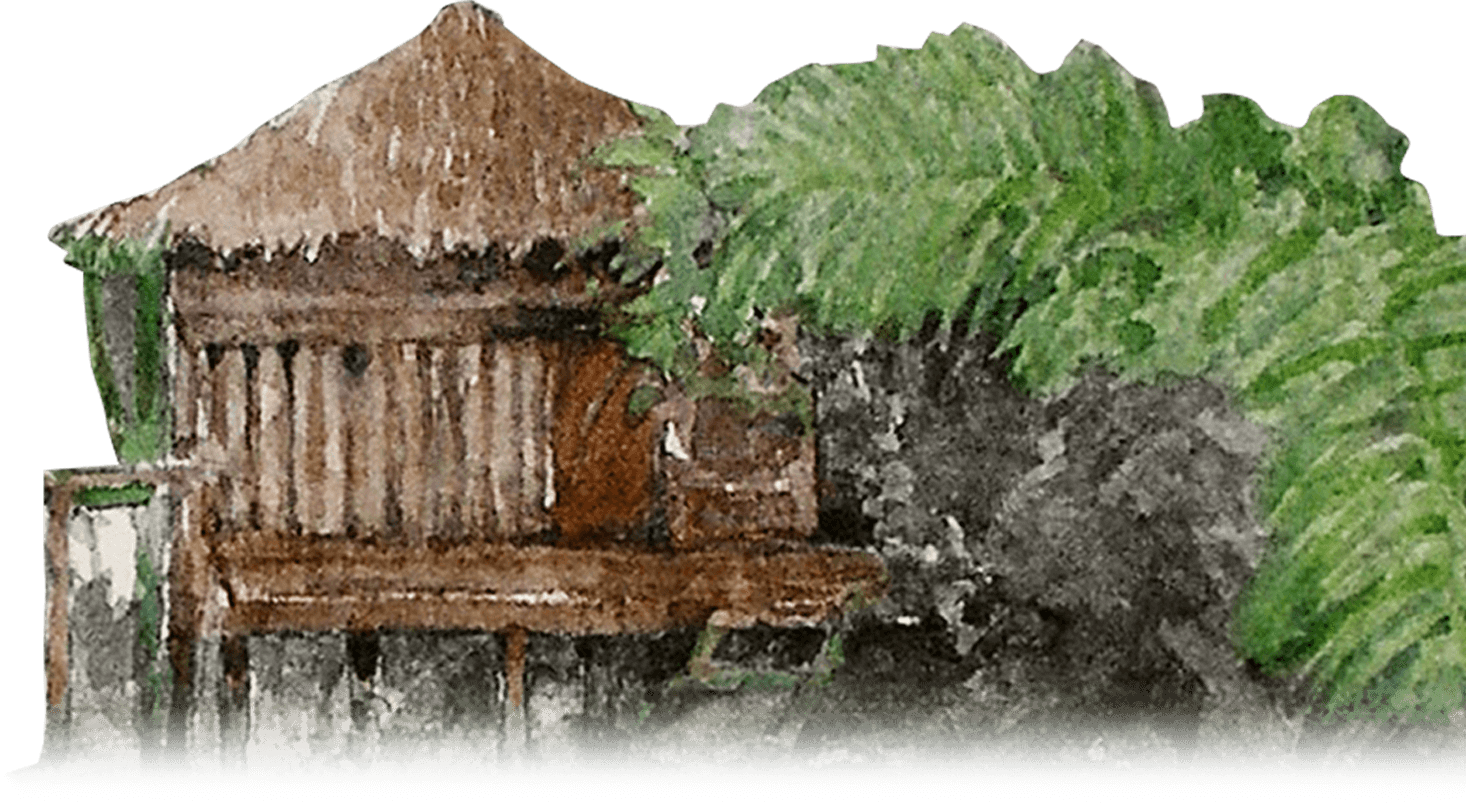
Integrated Solutions in the Amazon
Integrated
Solutions
We established Integrated Solutions to strengthen protected areas, especially in the Amazon, connecting managers, governments, civil society institutions, companies and communities close to the areas. There are three main projects:
MOSUC:
we supported the management of federal Protected Areas throughout Brazil, with incentives to social participation
LIRA:
we brought greater effectiveness to the management of protected areas, with integrated work and networking in the Amazon
MPB:
we monitored biodiversity in the Amazon with the contribution of local communities
18 Conservation Units
(12,600 ha) with biodiversity monitored by the MPB
320 families
benefitted in the Lower Rio Negro project
Over 4,000
benefitted by the Participative Monitoring of Biodiversity
Over 30,000
people registered in the national volunteer registry
Potential to benefit over
35,000
people in the LIRA Project
IPÊ projects in the Amazon exist because of the importance of the biome to biodiversity, to climate regulation, and to the people who live in the region and around the rest of the country. It is essential to preserve it and, at the same time, promote improvement for the local populations. Our focus is to consolidate the protected areas through solutions that link managers, public organizations, organizations of the civil society, and, especially, local communities that are heard in their needs and suggestions.
Solutions throughout the country
We also promoted the consolidation of protected areas in other regions of the country. In project Motivation and Success in the Management of Protected Areas (MOSUC), we incentivized the sharing of good practices in management of Protected Areas since 2012, operating alongside ICMBio.
With ICMBio, we also created a national registry of volunteers who want to operate in places like national parks and research centers, at a total of 260 sites.
Education
Education is in the IPÊ’s DNA, and, for 24 years, our school, ESCAS, has been sharing knowledge and ideas among people who aim to operate in favor of socio-environmental transformation. View our figures:
ESCAS, since 1996
7,084 benefited
334 benefited with
full and partial
scholarships
152 masters
graduated
66 MBA
Graduates
Our education activities exist because, with time, we accumulated valuable learning that we felt could be shared. Knowledge in socio-environmental matters is fundamental, as it permeates all of our lives.
Our perspective is strong operation in higher education, as its premise is the improvement of new forms of thinking about knowledge, through collection of information, reflection and exchanges between people. Our students put their learning into practice, promoting transformation in the surrounding area.
ESCAS, our Faculty for Environmental Conservation and Sustainability, offers short courses, a Professional Master's in Conservation of Biodiversity and Sustainable Development, and an MBA in Management of Socio-environmental Business.
We also promote courses in partnership with international universities, like Columbia University and Colorado Boulder University, as well as in company training for professionals in the area of sustainability, so that they may incorporate the theme into products and services.
With the pandemic, it was necessary to adapt ESCAS to the virtual environment, fully or partially. But, even there, we aimed to promote an atmosphere of belonging and closer ties between people to create a broad search for transformative knowledge. And we did so. Renovation, transformation and resilience were the words that marked ESCAS in 2020.
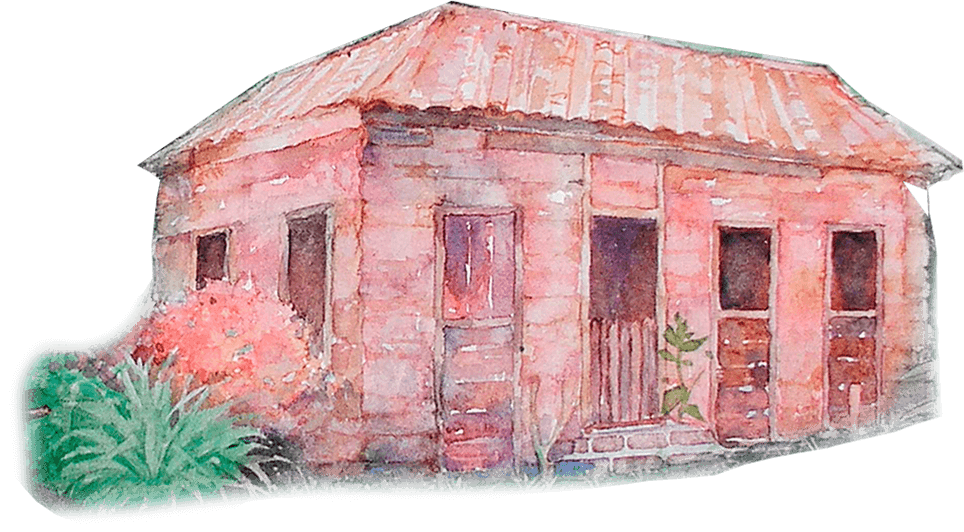
Partnerships
We promote initiatives to engage society in social and environmental causes and generate income in different communities, through partnerships established by our Business Department. In 2020, due to the pandemic, many actions were impacted, but we didn't stop. With our partners, we innovate and transform ourselves to carry on with the activities.
With Red Bull Bragantino: 500 trees donated
Representatives of Red Bull Bragantino, a soccer team from the city of Bragança Paulista, and IPÊ professionals cultivated 500 saplings in the Atlantic Forest. The action was a result of a game on Twitter promoted by the soccer team, engaging supporters and followers. The proposal was to promote a different match: Red Bull Bragantino x Forest Fires in Bragança Paulista. The team simulated a real time match on Twitter against the forest fires in the city. Every 15 interactions, a goal was scored, and 50 saplings guaranteed. Engagement was great and the victory was a great result.
With Tour House and Egencia: 6,000 trees donated
Egencia Global Alliance (EGA), a company in the Expedia Group, which has Tour House as its partner in Brazil, joined efforts with us in the challenge to plant 35 million trees in the Cantareira System. In a campaign at the Business Travel Show, a corporate tourism event promoted in London, in February 2020, with each visit to the Egancia booth, a tree would be planted. The result: 6,000 trees donated! Part of them was planted by Tour House employees.
Learn more.
With POLI-USP: EcoSwim donates R$ 3,430.00
For 13 years, part of the funds raised with the registration of this swimming event is donated to the IPÊ seedling nursery, in Nazaré Paulista. Poli-USP students, who promote Ecoswim, were not discouraged by the pandemic. Even without a pool, they organized lives in social media and made challenges that were worth points for those who fulfilled them and posted them on Instagram. They raised R$ 3,430.
With Havaianas: 355,090 pairs sold
Every year (for 16 years), Alpargatas transfers 7% of net income from the sale of the Havaianas-IPÊ collection to IPÊ's activities. In 2020, the jaguarundi (Herpailurus yagouaroundi), the walking leaf frog (Phyllomedusa burmeisteri) and the saffron toucanet (Pteroglossus bailloni) were the stars of collection! Havaianas-IPÊ have already turned around 10 million reals to the Institute's causes. Resources are invested in institutional strengthening and in the development of conservation work. “We developed this partnership 16 years ago, creating a healthy and sustainable form to continue supporting the institute every year, granting it the possibility to navigate all changes that take place, as well as the challenges that materialize day to day, and providing the opportunity to work with future sustainability professionals, training said people with resources that they may access. We are very proud of that.” Fernanda Romano, Marketing and Innovation Vice-President at Alpargatas.
With Tribanco:
R$ 27,230.56 donated
Since 2006, Tribanco supports the Institute’s activities through donations connected to its products. With each Tribanco Crédito Certo operation, 10 cents are donated and with each Tricard bill paid, 1 cent is also turned to IPÊ. In 2020, were donated R$ 27,230.56. “This is a 15-year relationship that has worked out very well and is doing good!” says Fernanda Avila, who is responsible for the ESG - sustainability | governance, compliance and sustainability area. The most recent action, which has been growing, is the rounding up of the bill, using Arredondar (round up).
With Rounding up Movement:
R$ 6,048.00 donated
In Arredondar (Rounding Up), the change of your purchases becomes donations to social and environmental organizations throughout Brazil. The rounding up via Tricard (Tribanco) and at shop cashiers at Havaianas are donated to IPÊ for our biodiversity conservation work. Individual donations in Arredondar are no greater than R$ 0.99. But the results are significant. Since the beginning of the movement, rounding up has already distributed 6.3 million reals to NGOs.
With Turista+:
R$ 1,878.54 donated
Turista+ stimulates tourists in Atibaia and region to donate part of the Room Tax to IPÊ, an organization that works in environmental conservation in the region. Our partners are hotels and inns in the city. The values donated this year were symbolic because the campaign was interrupted in March 2020, due to the pandemic, which had a significant effect on the sector.
New partnerships for people engagement
In partnership with Cause Related Marketing, Serpentina Bikini has started donating 5% of the net value of sale of its items to the IPÊ sapling nursery in Nazaré Paulista (São Paulo state). “The brand is greatly connected to water and its proposition is to support related causes. Supporting IPÊ, which operates in conservation of water in the Atlantic Forest is something that makes total sense and I hope that people see this and can contribute to this cause through Serpentina”, says Simone Nunes, creator of the brand.
FreeHelper connects NGOs with volunteers
Since 2020, IPÊ has counted on a partnership with FreeHelper, a startup that connects NGOs with volunteer professionals to promote short- and medium-term actions to increase the impact of several social causes through professionalization, increasing the culture of volunteer work through transformation.
Income generation for communities
Sales of products from the communities that we support reached R$ 125,366.47 in 2020, destined to embroiderers and used to continue the marketing of products by IPÊ. Embroiderers from the Sewing the Future project, in Nazaré Paulista, started to sell masks; 650 were purchased by partner Polimix. In the pandemic, they also had extra support, of R$ 7,500, from Instituto C&A. Another product is the Agroforestry Coffee, produced by rural settlers in Pontal do Paranapanema, in agroforestry systems: the coffee grows in the shade of the Atlantic Forest trees planted by farmers.
See at IPÊ's Store.
Partnership with Danone: sustainable projects for production
In 2020, IPÊ proceeded with two projects with Danone Brasil financing. The first, Caruanas project, also counts on financing by the Livelihood Fund and on a partnership with SEBRAE (via Ecoaba). The work is going to implement a total of 100 hectares of Agroforestry Systems (SAFs) in 33 different settlements, small properties and rural communities in Nova Iguaçu and Duque de Caxias, close to Tinguá Biological Reservation (Rio de Janeiro). The idea is to use the SAFs as a tool for agroecological transition, working in the social, economic and environmental dimensions. The agroforestry-system units under implementation allow the uniting of fruit species, annual and perennial cultures, with native trees of the Atlantic Forest, characteristics of the region, which helps the soil and local biodiversity, including food. IPÊ provides technical assistance and inputs for transformation of agroecology to take place.
Individuals donations
Donations are fundamental for socio-environmental and not-for-profit organizations, especially at critical moments like those lived in recent years, with growing threats to forestry. In 2020, donations totaled R$ 59,749.06 (PayPal, bank and campaings) and should be employed in institutional strengthening.
Donate now.
Financials
Origin of Resources
Origin of resources*
Non-Profit Organisations
Government
Private Sector
Individuals
* Correspond to national and international donations, notices, sponsorships and financiers
IPÊ is committed to the
U.N. Global Agenda
The 17 Sustainable Development Goals (SDG) need to be implemented across every country in the world within the next 15 years, by 2030. Our projects contribute to the following SDG's:






































